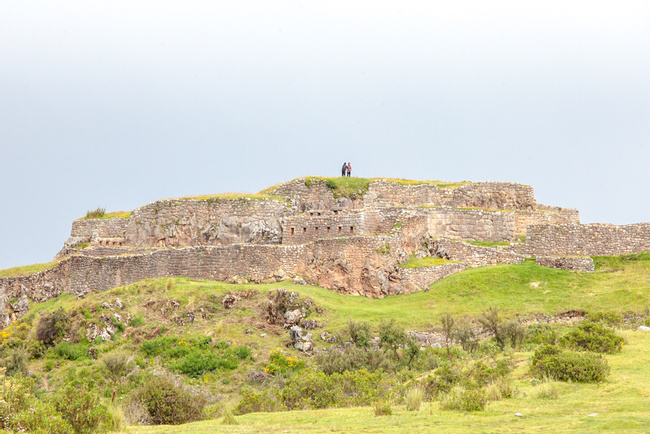
Sacsayhuaman
Perched on the hillside north of Cusco, the immense fortress ruins of Sacsayhuamán are some of the most impressive ruins in the area, holding both religious and military significance. When visitors hike up to the site, they will likely see a herd of alpaca, the domesticated South American camelid, roaming among the ruins.
More about Sacsayhuaman
Emperor Pachacuti (or Pachacútec) began building the hillside citadel in the 1440s, but the massive complex wasn't completed until nearly 100 years later. Today only a fraction of the original structure still stands, the rest having been torn down by the Spaniards to build houses in Cusco. What does remain, however, is remarkable.
The most impressive feature might be the massive 66-foot-tall (20-m) outer walls, which are still intact and zigzagging together like razor-sharp teeth, having withstood battles, earthquakes, and time. Even though the largest of the stones weigh over 300 tons, they are fitted perfectly, in the Inca style reserved for important structures. It is believed that in ancient times, this area was probably used for ceremonial gatherings. Today, visitors may be lucky enough to catch one of the many sun ceremonies still held throughout the year.
In 1536, the fort was the site of one of the bitterest battles of the Spanish conquest, sparked by Manco Inca’s rebellion. The Incan resistance leader’s army managed to seize Sacsayhuamán from the Spanish, one of the only victories of the native people against the conquistadors. The triumph was short-lived, however, and 50 Spanish cavalry led by Juan Pizarro, Francisco’s brother, succeeded in recapturing Sacsayhuamán and essentially ending the rebellion.
While Manco Inca survived and escaped to the fortress of Ollantaytambo, most of his forces leapt to their death from the high towers to avoid being killed by the Spanish. The next morning, condors feasted on the pile of corpses, an image captured forever on Cusco's coat-of-arms.
In Quechua the name Sacsayhuamán means “satisfied falcon,” though it’s often referred to mnemonically – “sexy woman” – by travelers.
Moments to look forward to
Full Day Horseback Riding Sacsayhuaman-Yuncaypata-Pumamarca Private Tour
Half Day Horseback Riding Cultural Sacsayhuaman Private Tour
We believe travel is more than ticking destinations off a list – it’s about discovering new places deeply, feeling connected wherever you go, and knowing you have a trusted team behind you every step of the way.



